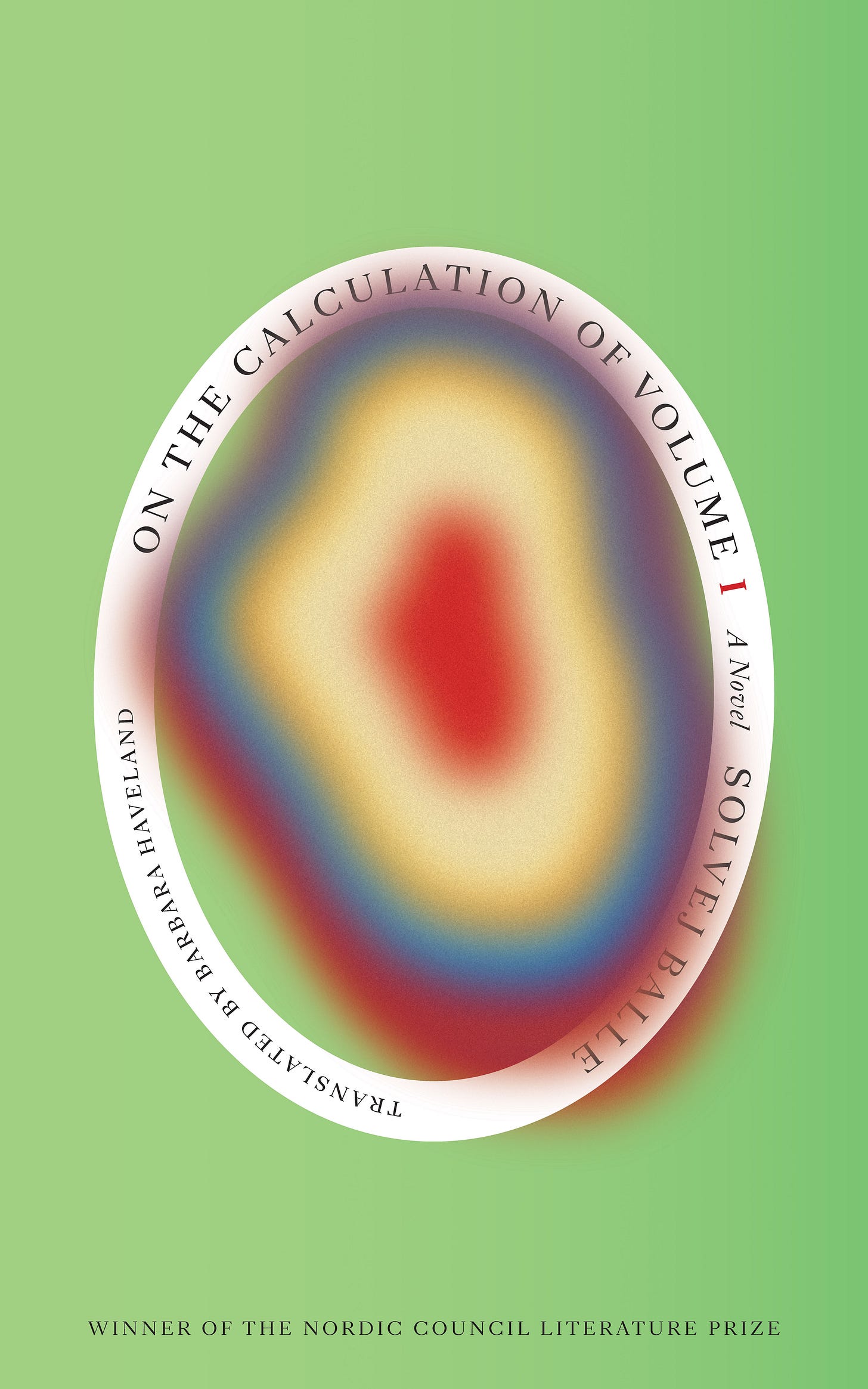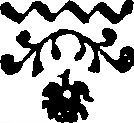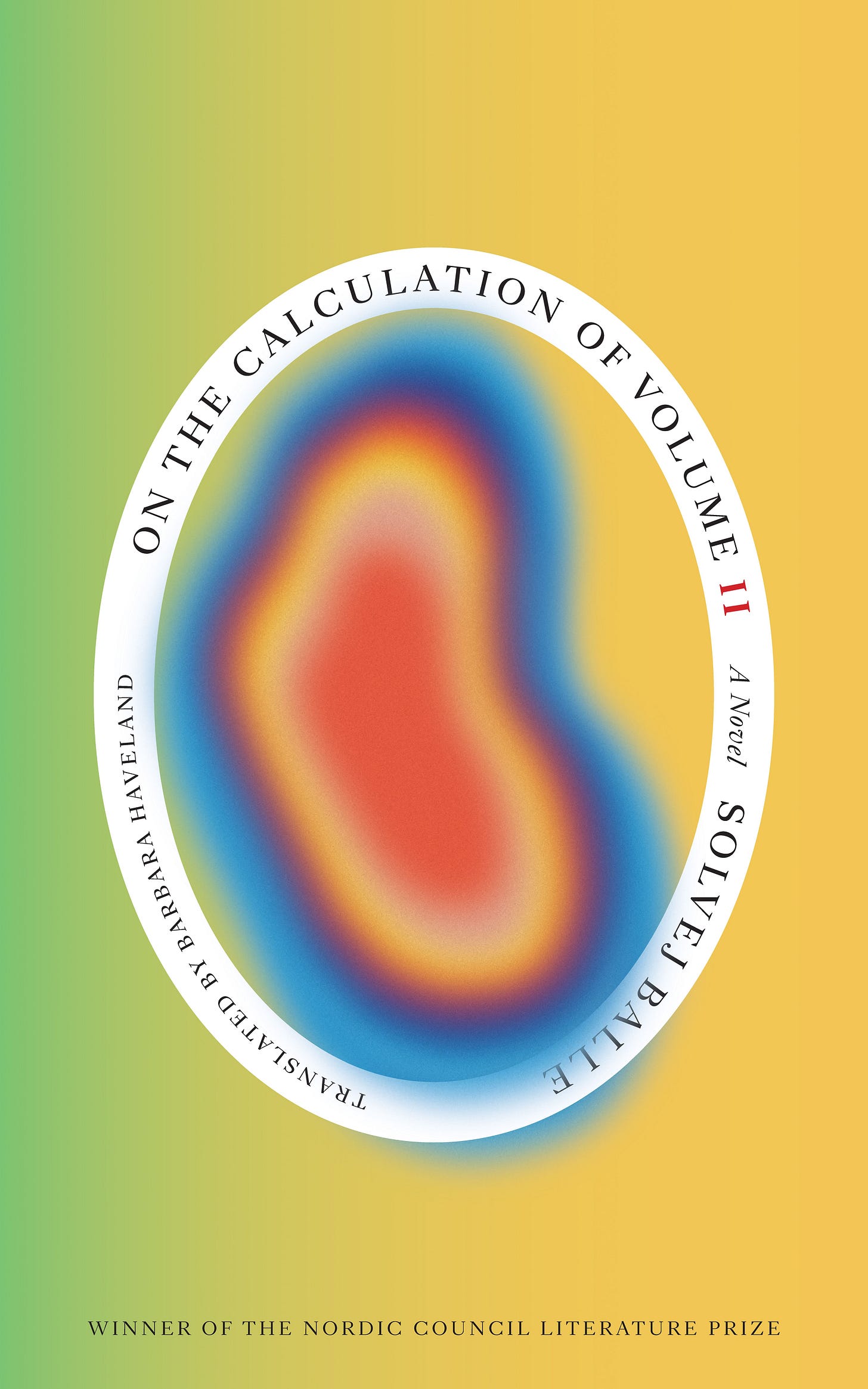Repetition Magic— On the Calculation of Volume
Solvej Balle’s On the Calculation of Volume expands the possible.
Dear Friends,
Books which excite my attention are books which expand my sense of what is possible in living and what is possible in writing. Usually, a book does one of these things, and many of my favorite books expand the sense of possibility in writing (since writing makes up a considerable part of my living). Rarely does a book do both.
I say book, but Solvej Balle’s On The Calculation of Volume is actually seven books, only the first two of which have been published in English. I hope you already know about these books, I hope you’ve already read them. If not, well…someone described their need for the second book as a Reading Emergency—I feel that way about the third, fourth, fifth, sixth and seventh.
If repetition is a kind of magic, these books are a spell.
& like everything else these days, On the Calculation of Volume seems to bear subtly but importantly on how to live in this impossible political moment.
— Sal
P.S. I’m adding this to
’s Hope Library. Scroll to the bottom for details.On the Calculation of Volume
The premise of Solvej Balle’s seven-volume On the Calculation of Volume is simple: without warning time has stopped moving forward. A particular date, November 18, begins to loop endlessly—but just for one person, the main character, Tara Selter.
The first book begins on the one-hundred-twenty-first of these November 18ths. That’s about how long it has taken Tara Selter to accept the weird reality of the new life.
The premise is fantastical, but it serves as both a literary constraint and as a sudden, dramatic turn in the life circumstances of the narrator. What becomes interesting in the opening pages, and then urgent as the books go forward, is how the writer and the character operate within these circumstances.
For the writer (Solvej Balle), the question is how to take this simple shape and keep going—how to keep turning the fabric inside out to reveal new designs, how to find the infinite rooms of the dream-house, door by door. You can feel the reader (yourself) breathing over the writer’s shoulder, saying can she do it? How can she do it? And you can feel the writer opening, and opening.
For the character (Tara Selter), the urgency is in living and responding. The character doesn’t know why this happened or how long this will go on, and therefore doesn’t know what kind of life she needs to make within the circumstance. Her understanding changes, and changes again, and with it the way she inhabits this strange life.
The tone of Balle’s writing is for the most part flat, factual, and the flatness is essential to the effect of the books. We are reading the notes of a person caught in an impossible situation, a fantastical one, and the documentary observation is what anchors her to the reality she has found herself in. The flatness also anchors the reader, laying out occurrences and discoveries brick by brick.
Circumstance, or Fate
Tara Selter’s repeating day lights up particular features of ordinary life. We often find ourselves in unprecedented circumstances, in new life patterns. We fall into a serious illness, or have a child, or even take a new job. Maybe we thought we had planned for these things, but the reality of them always overtakes whatever we had imagined. Now, our days have a new shape. The new shape has openings and constraints. Or to put it differently, the constraints themselves make a shape, and that shape includes barriers and apertures.
I am thinking, in particular, of illness, and the way it provides new vantages: from the bed, from the doctor’s waiting room, from the insomniac hours of the night. These are now the tools of thought and perception.
Illness, when it strikes, reminds you of everything you cannot control. There is a new emotional landscape of fear and suffering, of patience and patient-hood. Naturally, this links you to others in similar circumstances, others past and present, real and imaginary.
I’m thinking, too, about how it feels when the world changes around you. There is nothing overtly political about On the Calculation of Volume, and yet to me it feels as if the books speak to the moment. I, too, am in new and unreal circumstances, circumstances that I did not choose, but must live within. How to go on?
Repetition and Change
Daily life has as much repetition as change. In fact, it demonstrates that repetition and change are the same thing. Whenever you do something again and again (eating breakfast, meditation, daily work, sleep), repetition itself is what makes your inner changes perceptible. And change, as Buddhists say, is all of everything. There is no perfect repetition, no day that is exactly like any other day. How we live in this pattern is how we live.
On my way to a particular door, I usually pick up a particular coffee from a particular place. This is one of my repeating patterns. Yesterday, with my mind occupied by these books, I didn’t remember the coffee until I had walked onwards two blocks and was waiting for an elevator. I had to go back, but as I did so, the whole idea of going “back” felt absurd. I could go back in space, walking the same blocks in the opposite direction, but I was still going forward in time. There was no way to be where I had imagined myself, in the old repeating pattern.
This morning, I enter the day as if it was plural: I enter the days. Days like this. Days like what? People walk by, but they are not the same people as yesterday. The air is cold, but it is the cold between snows. You might as well say it is the cold between summers. Birds and mice are scrambling to find food. Humans are clutching their phones, because that’s what this time is like.
Sometimes I live happily in these patterns with their pleasures of reassurance and anticipation. I can also feel trapped in the repeating cycle of the day, of the week, of the year, as if I’ve exhausted all of the possibilities of my life.
Balle’s character Tara, caught in predicament where looping is the central fact of her life—a situation she did not cause and does not know how to change—finds ways to keep living creatively inside those repeating structures. Her house has infinite rooms.
Seasons
I’ve been thinking about seasons and their cyclic and psychological qualities for a book I’m working on, so when I ran across this passage about seasons, I copied it out.
Fortunately, the meteorologist then began to reflect on our strange relationship with the seasons. She talked about astronomical seasons and meteorological seasons. About the calendar year's division into spring and summer months, about people's surprise when meteorological phenomena did not accord with the calendar, even though everyone knew that any attempt to synchronize the weather with the predictability of planets and calendars was pointless.
She did not believe, however, that the seasons could be regarded as meteorological phenomena. Temperature and precipitation were meteorological phenomena, she said. Cold and heat, cloudbursts and drought. But seasons? She saw them more as psychological phenomena. Memory concentrates. Accepted stereotypes. Conglomerates of experiences and feelings, perhaps.
People ask if it won't soon be summer, even though we are well into July, simply because the summer has been on the cool side.
As a meteorologist one is almost expected to deliver particular weather conditions at particular times of year, she said. A proper summer. A proper winter. As if you hadn't done your job until you had delivered a certain sort of weather. Aren't we going to have a winter this year? As if the seasons were a concept of sorts that we dragged around with us. From childhood perhaps, she said, with winter snow and summer sun. Or perhaps not even that. Perhaps the human seasons really only existed in films or in our photo albums. Especially if you have children. She did it herself: took pictures of typical seasons. She had noticed that she took more pictures when the seasons lived up to our expectations of them: pictures of snow in winter and bright sunshine in summer, a hot day on the beach, red and yellow leaves and a child in rain boots in autumn— and always snaps with sandals in summer, even in summers when most days were rain boot days.
As if we had templates for the seasons and when everything fits we take a picture. As if it is an event in itself that the weather has got it right. If it is winter in a film there is always a little snow, she said. Or frost. Even if the film is set in southern Europe there will be a sprinkling of white, to let us know that it is winter.
Solvej Balle
On The Calculation of Volume I and II are available from New Directions.
You can read a short interview with Solvej Balle and her translator, Barbara Haveland here.
& as a bonus for those of us who like to take matters into our own hands, let us note that Solvej Balle self-published these books, which went on to win awards and inspire a bidding war for their English translations.
I’d love to hear your thoughts and what you’re reading.
Though the hope that these books offered me is peculiar, I added this post to the Hope library being brought together by
on her Hallelujah Book and Hope Letter. You can find the library here—anyone is welcome to contribute by February 27:






Sal, I want to read what you have to say about a turnip. I hereby invite Julie Gabrielli to start planning on that subject, as well. How beautiful is this? "how to keep turning the fabric inside out to reveal new designs, how to find the infinite rooms of the dream-house, door by door. You can feel the reader (yourself) breathing over the writer’s shoulder, saying can she do it? How can she do it? And you can feel the writer opening, and opening." Sigh.
As for the book(s), you've made it (them) sound fascinating and enticing. I see hope on many levels: success for a self-published author (no small thing!), a writer's trust in the paradox of expansiveness in a narrow constraint, the philosophical question of what happens to hope if we cannot perceive time as linear and one-directional, and maybe Tara (my namesake!)'s effort to salvage meaning in her recurring life. I'm hooked.
Thank you for this addition to the Hope Library - a true original!
Contemplating the profundity of the quotidian